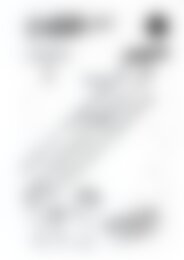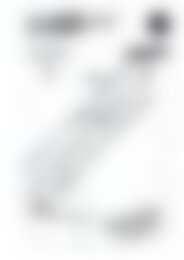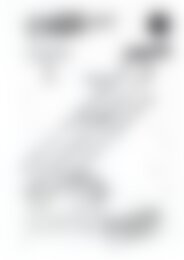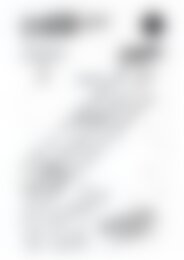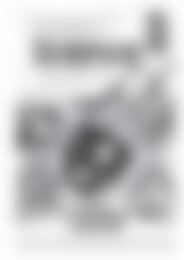PR-6102IRE Investigating Number Patterns 3
Create successful ePaper yourself
Turn your PDF publications into a flip-book with our unique Google optimized e-Paper software.
Viewing sample
<strong>Number</strong> patterns 3 – <strong>Investigating</strong> <strong>Number</strong> patterns<br />
Published by R.I.C. Publications ® 2012<br />
Copyright © Paul Swan 2012<br />
ISBN 978-1-922116-07-9<br />
RIC-6102<br />
Viewing sample<br />
Published by<br />
R.I.C. Publications ® Pty Ltd<br />
PO Box 332, Greenwood<br />
Western Australia 6924<br />
Copyright Notice<br />
No part of this book may be reproduced in any form or by any means, electronic or mechanical, including photocopying or<br />
recording, or by an information retrieval system without written permission from the publisher.
CONTENTS<br />
Addition <strong>Patterns</strong>..............................................................................................4–7<br />
<strong>Patterns</strong> Within the Addition Table...............................................................8–10<br />
Place Value <strong>Patterns</strong>.................................................................................... 11–13<br />
Noticing Nines............................................................................................... 14–15<br />
The 99 Times Table.............................................................................................16<br />
Eleven Times.......................................................................................................17<br />
Puzzling <strong>Patterns</strong>................................................................................................18<br />
Function Machines....................................................................................... 19–21<br />
<strong>Patterns</strong> in Tables Charts............................................................................ 22–23<br />
Viewing sample<br />
• www.ricpublications.com.au• © R.I.C. Publications ® • <strong>Investigating</strong> <strong>Number</strong> patterns • 3
Addition <strong>Patterns</strong><br />
1 Add together.<br />
+<br />
0 1 2 3 4<br />
5 6 7<br />
8 9<br />
0 0<br />
7<br />
1<br />
4<br />
2 2<br />
3<br />
4<br />
5<br />
6<br />
7<br />
8<br />
9<br />
2 Refer to the table above.<br />
3 Predict the results.<br />
= = 1ste row rij<br />
= = 2nd 2de rij row<br />
= = 3de 3rd rij row<br />
= = 4th row<br />
4de rij<br />
a Add all the numbers in the 1st, 2nd, 3rd and 4th rows together.<br />
b Write down any patterns that you notice.<br />
a Predict the results of adding the<br />
numbers in the:<br />
5th row<br />
6th row<br />
7th row<br />
8th row<br />
b In the box, add the numbers in each<br />
row to check your predictions.<br />
Viewing sample<br />
Tick the answers if you<br />
predicted correctly.<br />
I could use the answer from adding the numbers<br />
in the first row to help me work this out.<br />
4 • <strong>Investigating</strong> <strong>Number</strong> patterns • © R.I.C. Publications ® • www.ricpublications.com.au •
Addition <strong>Patterns</strong> (continued)<br />
4 Predict the results for adding:<br />
a 10 + 11 + 12 + 13 + 14 + 15 + 16 + 17 + 18 + 19 =<br />
b 12 + 13 + 14 + 15 + 16 + 17 + 18 + 19 + 20 + 21 =<br />
c 10 + 20 + 30 + 40 + 50 + 60 + 70 + 80 + 90 =<br />
d 14 + 15 + 16 + 17 + 18 + 19 + 20 + 21 + 22 + 23 =<br />
e 20 + 30 + 40 + 50 + 60 + 70 + 80 + 90 + 100 + 110 =<br />
5 Create even more new rows!<br />
f + + + + + + + + + =<br />
g + + + + + + + + + =<br />
h + + + + + + + + + =<br />
Viewing sample<br />
i + + + + + + + + + =<br />
j + + + + + + + + + =<br />
• www.ricpublications.com.au• © R.I.C. Publications ® • <strong>Investigating</strong> <strong>Number</strong> patterns • 5
You'll need these<br />
diagonals for the<br />
questions on the<br />
following page.<br />
0 . +<br />
More Addition <strong>Patterns</strong><br />
1 2 3 4 5 6 7 8<br />
AC C % ÷<br />
9 x<br />
4 5 6 –<br />
1 2 3 =<br />
1 Complete this table of addition facts.<br />
2 Add diagonally.<br />
7th diagonal<br />
Viewing sample<br />
8th diagonal<br />
9th diagonal<br />
10th diagonal<br />
a Add the numbers in the first 6 diagonals, beginning at the top right corner, and put the answers in the diagram at right top<br />
of the page. The first answer (9) and the last (54), have already been done for you.<br />
b Describe any patterns you notice.<br />
6 • <strong>Investigating</strong> <strong>Number</strong> patterns • © R.I.C. Publications ® • www.ricpublications.com.au •
More Addition <strong>Patterns</strong> (continued)<br />
3 Complete the following diagonals.<br />
a Estimate the answers of the:<br />
• 7th diagonal<br />
b Add the numbers along each diagonal.<br />
Write the answers in the boxes.<br />
• 8th diagonal<br />
• 9th diagonal<br />
• 10th diagonal<br />
4 Go back further!<br />
a What do you think will happen if you continue to add the numbers along each of the<br />
remaining diagonals? (The next diagonal of numbers starts at the .)<br />
b Calculate the diagonal at the star to see if you're right<br />
Total : Were you correct?<br />
5 Now complete the diagonals from right to left, down<br />
from the top left corner.<br />
a Examine the diagonals; the first is listed below:<br />
Yes<br />
Tick the answer if you<br />
predicted correctly.<br />
Viewing sample<br />
No<br />
• www.ricpublications.com.au• © R.I.C. Publications ® • <strong>Investigating</strong> <strong>Number</strong> patterns • 7
<strong>Patterns</strong> Within the Addition Table<br />
1 Look at the following table of addition facts.<br />
d Try the same thing with other blocks of four<br />
numbers.<br />
e What do you notice?<br />
2 Use the space below.<br />
a Draw a rectangle around<br />
a block of four numbers;<br />
e.g.<br />
b Add all the numbers in<br />
the box;<br />
e.g. 5 + 6 + 6 + 7 =<br />
c Divide the total by 4;<br />
e.g. ÷ 4 =<br />
a Look for a relationship that will allow you to work out the total of the four<br />
Viewing sample<br />
numbers in the box.<br />
b Explain how your method will allow you to quickly work out the total of the four<br />
numbers mentally.<br />
8 • <strong>Investigating</strong> <strong>Number</strong> patterns • © R.I.C. Publications ® • www.ricpublications.com.au •
<strong>Patterns</strong> Within the Addition Table (cont.)<br />
3 Even more patterns.<br />
a<br />
b What other rules or patterns have you discovered? Write them down.<br />
ChallengeViewing sample<br />
Work out the total of the 100<br />
numbers in the addition table.<br />
• www.ricpublications.com.au• © R.I.C. Publications ® • <strong>Investigating</strong> <strong>Number</strong> patterns • 9
More <strong>Patterns</strong> in the Addition Table<br />
1 Look at the following addition table.<br />
2 Refer to the table above.<br />
a Draw some crosses of your own on the addition table.<br />
3 Make it bigger.<br />
a Step 1:<br />
Look at the cross shown on the<br />
table and write down the numbers in<br />
the top left corner and the bottom<br />
right corner and multiply them.<br />
x =<br />
b Step 2:<br />
Multiply the numbers in the top<br />
right and bottom left corners of<br />
the cross.<br />
x =<br />
c Step 3:<br />
Subtract the smaller answer from<br />
the larger.<br />
– =<br />
b Multiply the numbers in opposite corners of the cross and then subtract the smaller<br />
from the larger number.<br />
c What did you notice?<br />
x =<br />
x =<br />
- =<br />
a Try drawing a larger cross on the addition table.<br />
For example, a 4 x 4 cross would look like this:<br />
Repeat the steps above for two different 4 x 4 crosses.<br />
x =<br />
x =<br />
- =<br />
Viewing sample<br />
x =<br />
x =<br />
x =<br />
- =<br />
x =<br />
- =<br />
b What did you notice about the answers?<br />
10 • <strong>Investigating</strong> <strong>Number</strong> patterns • © R.I.C. Publications ® • www.ricpublications.com.au •
Place Value <strong>Patterns</strong> – 1<br />
1 Try the following multiplications.<br />
a 26 x 1 =<br />
A calculator<br />
will help.<br />
b 26 x 10 =<br />
c 26 x 100 =<br />
d 26 x 1000 =<br />
e 26 x 0.1 =<br />
f 26 x 0.01 =<br />
g 26 x 0.001 =<br />
h 26 x 0.0001 =<br />
2 See a pattern? 3 How is that?<br />
a Describe the pattern you can see.<br />
b In what ways are the answers the<br />
same?<br />
c In what ways are the answers<br />
different?<br />
4 Describe a method for doing calculations, like those above, in your head.<br />
5 Try these without a calculator first.<br />
a Describe what happens when you<br />
multiply by a number greater than<br />
one.<br />
a 39 x 10 =<br />
b Describe what happens when you<br />
multiply by a number less than one.<br />
Viewing sample<br />
b 39 x 100 =<br />
Then check your answers<br />
with a calculator.<br />
c 39 x 0.01 =<br />
• www.ricpublications.com.au• © R.I.C. Publications ® • <strong>Investigating</strong> <strong>Number</strong> patterns • 11
0 . +<br />
Place Value <strong>Patterns</strong> – 2<br />
1 2 3 4 5 6 7 8<br />
AC C % ∏<br />
9 x<br />
4 5 6 –<br />
1 2 3 =<br />
1 Try the following divisions.<br />
a 43 ÷ 1 =<br />
b 43 ÷ 10 =<br />
c 43 ÷ 100 =<br />
d 43 ÷ 1 000 =<br />
e 43 ÷ 10 000 =<br />
2 <strong>Patterns</strong>.<br />
a Describe any patterns you notice.<br />
3 Try these without a calculator first.<br />
f 43 ÷ 0.1 =<br />
g 43 ÷ 0.01 =<br />
h 43 ÷ 0.001 =<br />
i 43 ÷ 0.0001 =<br />
j 43 ÷ 0.00001 =<br />
b Describe a method for doing calculations, like those above, in your head.<br />
a 79 ÷ 10 =<br />
b 79 ÷ 1000 =<br />
c 79 ÷ 10 000 =<br />
d 79 ÷ 0.1 =<br />
e 79 ÷ 0.01 =<br />
f 79 ÷ 0.0001 =<br />
A calculator<br />
will help.<br />
Viewing sample<br />
Check your answers with<br />
a calculator.<br />
12 • <strong>Investigating</strong> <strong>Number</strong> patterns • © R.I.C. Publications ® • www.ricpublications.com.au •
Place Value <strong>Patterns</strong> – 3<br />
1 Try the following multiplications.<br />
a 173 x 27 =<br />
b 173 x 2.7 =<br />
c 173 x 0.27 =<br />
d 173 x 0.027 =<br />
2 Determine.<br />
a Write about any patterns you notice.<br />
b In what ways are the answers the same?<br />
c In what ways are the answers different?<br />
e 17.3 x 27 =<br />
f 1.73 x 27 =<br />
g 17.3 x 2.7 =<br />
h 1.73 x 2.7 =<br />
3 237 x 16 = 3792. Use this information to help work out the answers to:<br />
a 23.7 x 16 =<br />
b 2.37 x 16 =<br />
c 23.7 x 1.6 =<br />
d 237 x 0.16 =<br />
A calculator<br />
will help.<br />
d How does the position of the decimal point change the answer?<br />
e 237 x 160 =<br />
Viewing sample<br />
f 2370 x 16 =<br />
g 2370 x 1.6 =<br />
h 0.237 x 160 =<br />
4 Explain how patterns can help to work out answers to questions like those above.<br />
• www.ricpublications.com.au• © R.I.C. Publications ® • <strong>Investigating</strong> <strong>Number</strong> patterns • 13
Noticing Nines – 1<br />
1 You'll be familiar with this?<br />
a Complete the nine times table.<br />
1 x 9 =<br />
2 x 9 =<br />
3 x 9 =<br />
4 x 9 =<br />
5 x 9 =<br />
6 x 9 =<br />
7 x 9 =<br />
8 x 9 =<br />
9 x 9 =<br />
10 x 9 =<br />
What do you notice<br />
about the tens?<br />
b Record your observations.<br />
What happens when<br />
you add the digits?<br />
e.g. 2 x 9 = 18<br />
1 + 8 = 9<br />
What do you notice<br />
about the ones?<br />
What do you notice<br />
about the answers?<br />
9 = 9<br />
1 + 8 = 9<br />
Viewing sample<br />
2 What happens if, instead of adding the digits in the answer, you subtract the<br />
smaller number from the larger? e.g. 4 x 9 = 36, 6 – 3 = 3.<br />
Describe the pattern that is formed.<br />
=<br />
=<br />
=<br />
=<br />
=<br />
=<br />
=<br />
=<br />
14 • <strong>Investigating</strong> <strong>Number</strong> patterns • © R.I.C. Publications ® • www.ricpublications.com.au •
0 . +<br />
Noticing Nines – 2<br />
1 2 3 4 5 6 7 8<br />
AC C % ∏<br />
9 x<br />
4 5 6 –<br />
1 2 3 =<br />
1 List the answers to the nine times table.<br />
1 x 9 =<br />
9<br />
(<br />
odd<br />
)<br />
2 x 9 = ( )<br />
3 x 9 = ( )<br />
4 x 9 = ( )<br />
5 x 9 = ( )<br />
1 8<br />
2 7<br />
3 6<br />
4 5<br />
5 4<br />
6 3<br />
7 2<br />
8 1<br />
9 0<br />
2 When the digits in the answer are split, more<br />
patterns may be found.<br />
3 What happens when the numbers along each of the diagonals are<br />
subtracted? (Always take the smaller number away from the bigger.)<br />
4 Complete the following multiplications.<br />
Write down<br />
whether the answer<br />
is odd or even.<br />
6 x 9 = ( )<br />
7 x 9 = ( )<br />
8 x 9 = ( )<br />
9 x 9 = ( )<br />
10 x 9 = ( )<br />
a What happens when you add the digits along the diagonal?<br />
b Try adding the digits along the other diagonal; i.e.<br />
Write about what you notice.<br />
a 736 x 9 =<br />
6624 6 + 6 + 2 + 4<br />
=<br />
18<br />
=<br />
9<br />
b 437 x 9 = = =<br />
c 615 x 9 = = =<br />
d 336 x 9 = = =<br />
e 167 x 99 = = =<br />
2<br />
8<br />
Add the digits in the<br />
answer and keep<br />
adding until a single<br />
digit is found.<br />
Viewing sample<br />
5 What do you notice when the digits are added?<br />
• www.ricpublications.com.au• © R.I.C. Publications ® • <strong>Investigating</strong> <strong>Number</strong> patterns • 15
The 99 Times Table<br />
1 2 3 4 5 6 7 8<br />
AC C % ÷<br />
7 8 9 x<br />
4 5 6 –<br />
1 2 3 =<br />
0 . +<br />
2 You have discovered patterns in the table of 9.<br />
You can also see patterns in the table of 99.<br />
a What do you notice about the units, tens and hundreds?<br />
1 Complete the 99<br />
times table.<br />
b What happens when you add the digits in the answer?<br />
1 x 99 = 99<br />
2 x 99 =<br />
3 x 99 =<br />
4 x 99 =<br />
5 x 99 =<br />
6 x 99 =<br />
7 x 99 =<br />
8 x 99 =<br />
9 x 99 =<br />
10 x 99 =<br />
11 x 99 =<br />
12 x 99 =<br />
13 x 99 =<br />
14 x 99 =<br />
15 x 99 =<br />
16 x 99 =<br />
17 x 99 =<br />
18 x 99 =<br />
19 x 99 =<br />
20 x 99 =<br />
21 x 99 =<br />
198<br />
297<br />
3 Try to write a rule to determine whether a number<br />
is divisible by nine without leaving a remainder. Share<br />
and discuss your ideas with a friend.<br />
Viewing sample<br />
16 • <strong>Investigating</strong> <strong>Number</strong> patterns • © R.I.C. Publications ® • www.ricpublications.com.au •
Eleven Times<br />
1 2 3 4 5 6 7 8<br />
AC C % ÷<br />
7 8 9 x<br />
4 5 6 –<br />
1 2 3 =<br />
0 . +<br />
1 Notice what happens when the<br />
table is extended further.<br />
a 11 x 11 =<br />
Do you know the pattern in<br />
the eleven times table?<br />
11, 22, 33, 44, 55, 66, 77, 88, 99<br />
b 12 x 11 =<br />
c 13 x 11 =<br />
d 14 x 11 =<br />
Predict the following.<br />
a 15 x 11 =<br />
b 16 x 11 =<br />
c 17 x 11 =<br />
Check your answers.<br />
4 Try these multiplications.<br />
a 51 x 11 =<br />
b 27 x 11 =<br />
c 31 x 11 =<br />
d 34 x 11 =<br />
e 43 x 11 =<br />
f 72 x 11 =<br />
2 Do you think the pattern will<br />
continue?<br />
Yes<br />
3 Try some more to check.<br />
a 18 x 11 =<br />
b 19 x 11 =<br />
5 What do you think you would need to<br />
do to multiply 68 by 11?<br />
c What happens when you reach<br />
20 x 11?<br />
No<br />
To multiply any two-digit<br />
number by 11, take the two<br />
digits of the original number<br />
to form the first and last digits<br />
of the number; e.g. 42 x 11<br />
gives 4_2. The middle digit is found by adding<br />
these two digits; e.g. 4 + 2 = 6 answer = 462.<br />
Viewing sample<br />
6 Now try these multiplications.<br />
a 59 x 11 =<br />
b 82 x 11 =<br />
c 77 x 11 =<br />
d 93 x 11 =<br />
• www.ricpublications.com.au• © R.I.C. Publications ® • <strong>Investigating</strong> <strong>Number</strong> patterns • 17
0 . +<br />
Puzzling <strong>Patterns</strong><br />
1 2 3 4 5 6 7 8<br />
AC C % ÷<br />
9 x<br />
4 5 6 –<br />
1 2 3 =<br />
1 Complete the first three questions in each sequence using a calculator.<br />
Use any patterns you discover to complete the rest of the questions<br />
without a calculator. Remember to check your answers.<br />
a 99 x 12 =<br />
99 x 23 =<br />
99 x 34 =<br />
99 x 45 =<br />
99 x 56 =<br />
99 x 67 =<br />
99 x 78 =<br />
b 1 x 8 + 1 =<br />
12 x 8 + 2 =<br />
123 x 8 + 3 =<br />
1 234 x 8 + 4 =<br />
12 345 x 8 + 5 =<br />
1 234 567 x 8 + 7 =<br />
c 9 x 1 089 =<br />
9 x 10 989 =<br />
9 x 109 989 =<br />
= 987 654<br />
You can<br />
use a<br />
calculator<br />
here.<br />
But work<br />
out the rest<br />
yourself!<br />
d 4 x 2 178 =<br />
4 x 21 978 =<br />
4 x 219 978 =<br />
4 x 2 199 978 =<br />
4 x 21 999 978 =<br />
e 1 x 9 + 2 =<br />
12 x 9 + 3 =<br />
123 x 9 + 4 =<br />
1 234 x 9 + 5 =<br />
12 345 x 9 + 6 =<br />
1 234 567 x 9 + 8 =<br />
12 345 678 x 9 + 9 =<br />
f 9 x 9 + 7 =<br />
98 x 9 + 6 =<br />
987 x 9 + 5 =<br />
9 876 x 9 + 4 =<br />
98 765 x 9 + 3 =<br />
= 1 111 111<br />
Viewing sample<br />
9 x 1 099 989 =<br />
= 8 888 888<br />
9 876 543 x 9 + 1 =<br />
18 • <strong>Investigating</strong> <strong>Number</strong> patterns • © R.I.C. Publications ® • www.ricpublications.com.au •
Function Machines – 1<br />
When numbers pass through a function machine, they change according to the way<br />
the machine has been programmed. For example, the function machine below has been<br />
programmed to add five (+5). Note what happens when numbers pass through the machine.<br />
1 Insert the missing numbers for each function machine<br />
and explain what the machine is doing.<br />
a 5, 6, 7, 8, 9, + 10<br />
b 100, 101, 102, 103, + 1<br />
c 10, 11, 12, 13, 14 - 1<br />
d 20, 30, 40, 50, 60 ÷ 2<br />
e 20, 30, 40, 50, 60 ÷ 10<br />
f 3, 6, 9, 12, 15 x 4<br />
g - 5 10, 11, 12, 13, 14<br />
h x 2 10, 12, 14, 16, 18<br />
2 Explain how you worked out the answers to questions (g) and (h).<br />
3 Try this function machine.<br />
The + 5 machine<br />
adds five.<br />
15, 16, adds 10<br />
Viewing sample<br />
+ 8 14, 15, 16, 17, 18<br />
Challenge<br />
Write a ‘function machine’ question and give it to a friend to answer.<br />
(Remember to write the answers on a separate sheet of paper.)<br />
• www.ricpublications.com.au• © R.I.C. Publications ® • <strong>Investigating</strong> <strong>Number</strong> patterns • 19
Function Machines – 2<br />
1 Insert the missing numbers for each machine and give a<br />
brief explanation of what each machine does.<br />
a 10, 12, 14, 16, 18 ÷ 2<br />
b 10, 12, 14, 16, 18 x 1 ⁄2<br />
c 10, 20, 30, 40, 50 x 10<br />
d 100, 200, 300, 400 ÷ 10<br />
e x 2 20, 40, 80, 100<br />
2 Take a closer look at the numbers coming in and going out of the machines.<br />
Write about any patterns you notice.<br />
3 Investigate what occurs when two function machines are placed together.<br />
a 1, 2, 3, 4, 5 + 2 3, 4, 5, 6, 7 + 3<br />
b 10, 11, 12, 13 + 5 + 5<br />
c What did you notice?<br />
4 Could you replace two machines with one?<br />
Try these challenging questions to see if you are right.<br />
6, 7,<br />
Viewing sample<br />
a What happens when two subtraction machines are joined?<br />
Write questions of your own to find the answer.<br />
Yes<br />
No<br />
b What happens when an addition and a subtraction machine are joined?<br />
Write questions of your own to find the answer<br />
20 • <strong>Investigating</strong> <strong>Number</strong> patterns • © R.I.C. Publications ® • www.ricpublications.com.au •
Function Machines – Finding the Program<br />
Try to work out what each of the following function machines<br />
do and write the program on the side of the machine. Explain in<br />
words what the function machine is doing.<br />
a 1, 2, 3, 4, 5 4, 5, 6, 7, 8<br />
b 1, 2, 3, 4, 5 11, 12, 13, 14, 15<br />
c 2, 4, 6, 8, 10 6, 12, 18, 24, 30<br />
d 10, 20, 30, 40 5, 10, 15, 20<br />
e 10, 11, 12, 13 5, 6, 7, 8, 9<br />
f 3, 4, 5, 6, 7 30, 40, 50, 60, 70<br />
g 3, 4, 5, 6, 7 0.3, 0.4, 0.5, 0.6, 0.7<br />
h 6, 7, 8, 9 7.5, 8.5, 9.5, 10.5<br />
i 10, 12, 14, 16 7.5, 9.5, 11.5, 13.5<br />
j 3, 6, 9, 12, 15 1, 2, 3, 4, 5<br />
Challenge!<br />
This<br />
machine<br />
is multiplied<br />
by six<br />
adds 3<br />
Viewing sample<br />
Write function machine questions with<br />
missing functions. Give them to a friend to solve.<br />
Remember to write the missing functions on a<br />
separate sheet of paper.<br />
• www.ricpublications.com.au• © R.I.C. Publications ® • <strong>Investigating</strong> <strong>Number</strong> patterns • 21
<strong>Patterns</strong> in Tables Charts<br />
1 Complete the tables chart.<br />
x<br />
1 2 3 4 5 6 7 8 9<br />
a Staring at the top left-hand corner of your tables chart‚ draw larger and larger<br />
squares.<br />
1 1<br />
2 2<br />
3 3<br />
4 4<br />
5 5<br />
6 6<br />
7 7<br />
8 8<br />
9 9<br />
1 2 3 4<br />
1 2 3 2 4 6 8<br />
1 2 2 4 6 3 6 9 12<br />
1 2 4 3 6 9 4 8 12 16<br />
Add the numbers in each square.<br />
2 3 4 5 6 7 8 9<br />
4<br />
6<br />
8<br />
10<br />
12<br />
14<br />
16<br />
18<br />
6 8 10 12 14 16 18<br />
b Predict the totals for the next 3 squares. Check your predictions.<br />
1 2 3 4 5 6 7<br />
1 2 3 4 5 6 2 4 6 8 10 12 14<br />
1 2 3 4 5 2 4 6 8 10 12 3 6 9 12 15 18 21<br />
2 4 6 8 10 3 6 9 12 15 18 4 8 12 16 20 24 28<br />
3 6 9 12 15 4 8 12 16 20 24 5 10 15 20 25 30 35<br />
4 8 12 16 20 5 10 15 20 25 30 6 12 18 24 30 36 42<br />
5 10 15 20 25 6 12 18 24 30 36 7 14 21 28 35 42 49<br />
Viewing sample<br />
c Now try an 8 x 8 and 9 x 9 square. What set of numbers is formed?<br />
22 • <strong>Investigating</strong> <strong>Number</strong> patterns • © R.I.C. Publications ® • www.ricpublications.com.au •
<strong>Patterns</strong> in Tables Charts (continued)<br />
A square number is formed when a number is multiplied by itself; for example,<br />
5 x 5 = 25. Twenty-five is a square number. A raised 2 is used to show when a number is to<br />
be squared; e.g. 5 2 = 5 x 5 or 25.<br />
Twenty-five is called a square number because if you tried to draw a rectangle with the<br />
dimensions 5 x 5 it would form a square.<br />
2 Draw a diagram to show 3 2 .<br />
Square numbers have many interesting properties. Some numbers may be written as the sum<br />
of four square numbers. For example‚ 23 may be written as the sum of four square numbers.<br />
9 9<br />
4 1<br />
9 + 9 + 4 + 1 = 23<br />
1 2 3 4 5<br />
6 7 8 9 10<br />
11 12 13 14 15<br />
16 17 18 19 20<br />
21 22 23 24 25<br />
3 Try these.<br />
a 18 b 25 c 39 d 67<br />
Viewing sample<br />
e 50 f 69 g 100 h 111<br />
Make some up for someone to try.<br />
• www.ricpublications.com.au• © R.I.C. Publications ® • <strong>Investigating</strong> <strong>Number</strong> patterns • 23
Viewing sample





